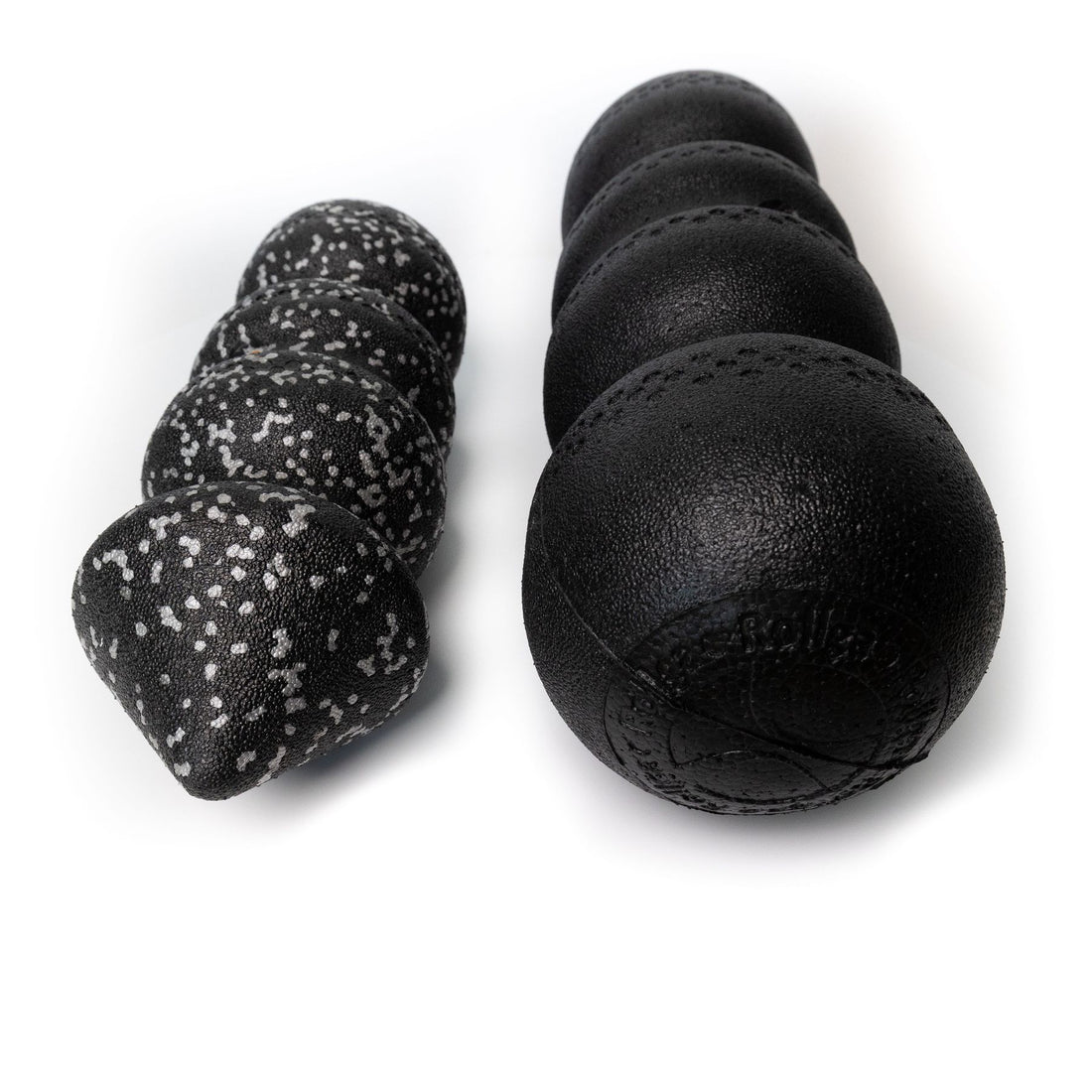
The aim here is to explore and compare the effectiveness of different foam roller designs in the field of myofascial release and muscle recovery. Specifically, we investigate the benefits and limitations of smooth and textured foam rollers in contrast to the contoured Rollga Roller. By examining the scientific evidence and biomechanical principles, we demonstrate that the contoured Rollga Roller offers unique advantages, making it the superior choice for optimal muscle relief and therapeutic results.
-
Introduction: Foam rolling has gained popularity as a self-myofascial release technique for enhancing muscle recovery, flexibility, and overall performance. Smooth and textured foam rollers are commonly used tools in this practice. However, the emergence of the contoured Rollga Roller presents an innovative design with potential advantages over traditional foam rollers. Let's delve into the scientific foundation supporting the superiority of the contoured Rollga Roller in comparison to smooth and textured foam rollers.
-
Biomechanical Considerations: The effectiveness of a foam roller is influenced by its design and interaction with the body. The contoured Rollga Roller, with its unique shape and contours, conforms to the natural curves of the body, providing targeted and uniform pressure distribution. This design mimics the human anatomy, allowing for optimal muscle engagement and enhanced myofascial release. In contrast, smooth foam rollers may lack the necessary precision, while textured foam rollers may create excessive discomfort or unnecessary pressure points.
-
Pressure Distribution and Myofascial Release: Scientific studies have demonstrated that the contoured Rollga Roller promotes more effective pressure distribution than smooth or textured foam rollers. The varying heights and widths of the Rollga Roller's contours facilitate a broader contact surface area, enabling efficient engagement of the fascial tissues. This enhanced contact optimizes the release of fascial restrictions and improves the overall efficiency of the myofascial release technique.
-
Muscle Targeting and Activation: The contoured surface of the Rollga Roller facilitates targeted muscle engagement and activation. The precise contouring supports natural movement patterns and encourages proper alignment of the body during foam rolling exercises. Smooth foam rollers lack the ability to effectively target specific muscle groups, while textured foam rollers may inadvertently activate muscles not intended for treatment. The Rollga Roller's design allows for effective targeting of desired muscles, resulting in enhanced therapeutic outcomes.
-
Comfort and Pain Threshold: The contoured Rollga Roller offers a comfortable and pain-free experience during foam rolling. The gentle curves and softer edges of the Rollga Roller reduce discomfort and minimize pain associated with foam rolling, making it suitable for individuals of varying fitness levels. Smooth foam rollers may be less comfortable, particularly for individuals with heightened pain sensitivity, while textured foam rollers can be excessively abrasive or painful. The Rollga Roller's contoured design promotes a pleasant and effective myofascial release experience.
-
Conclusion: Based on the scientific evidence and biomechanical considerations, it is evident that the contoured Rollga Roller surpasses smooth and textured foam rollers in terms of effectiveness and therapeutic benefits. The contoured shape of the Rollga Roller optimizes pressure distribution, promotes targeted muscle engagement, and ensures a comfortable and pain-free experience. As a result, individuals seeking optimal myofascial release, muscle recovery, and enhanced performance should consider the contoured Rollga Roller as their preferred tool for foam rolling exercises.
Disclaimer: The claims made in this paper are based on existing scientific literature and biomechanical principles. However, individual experiences and preferences may vary, and further research is encouraged to corroborate and expand upon the findings presented herein.
